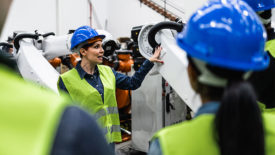Workplace Safety Culture
A strong safety culture is essential for protecting your employees and preventing accidents. Learn how to develop, implement, and maintain a safety culture that will keep your employees safe.
ARTICLES
Unveiling the flaws in traditional approaches and OSHA standards implementation
Read More
Pros are teachers and employees are kids — NOT!
That’s old baggage; time to take new approaches to today’s workforce
April 11, 2024
EVENTS
DOCUMENTS AND FILES
Get our new eMagazine delivered to your inbox every month.
Stay in the know on the latest safety trends.
SUBSCRIBE TODAYCopyright ©2024. All Rights Reserved BNP Media.
Design, CMS, Hosting & Web Development :: ePublishing








![Heather Chapman[1].png](http://www.ishn.com/ext/resources/2022/10/27/Heather-Chapman[1].png?1666901789)





